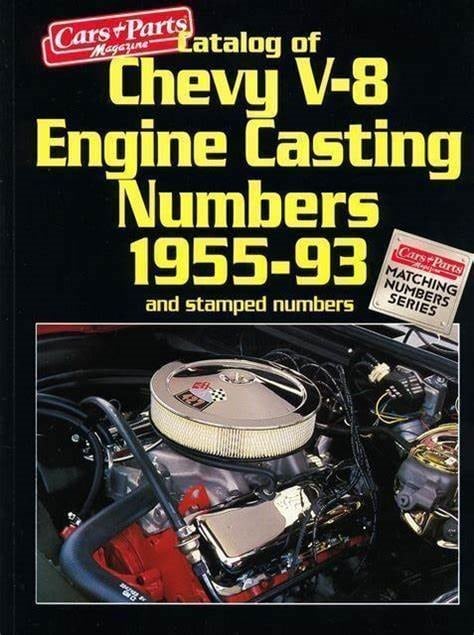What made the 1967 Corvette L88 Coupe that sold for $2,695,000 a few years back so special? Was it the limited production of the L88 racing package, the artistry of the C2 platform, or the car’s documented history that led the bidders to such heights? It was all these things, but most importantly, it was the meticulous care taken during restoration – including preservation of the matching numbers on the 427/430 HP engine.
While most of us don’t have multi-million dollar collector cars, experts agree that having a numbers-matching engine can increase the value of your vintage vehicle by 30-40%. If you are using your original block, why wouldn’t you want to preserve the numbers?
How to check the numbers on your vintage Chevrolet
Verify Your VIN
Before 1968’s federal law requiring the serial number to be visible from outside the car, manufacturers stamped the VIN in various places. For example, you can find the VIN on the steering column of the 1960-1962 Corvettes or on the brace below the 1963-1967 Corvettes glove compartment. 1968 and newer Corvettes have the VIN stamped on either the windshield A-pillar or the dashboard, allowing you to view it through the windshield.
Compare Codes
Corvettes built before 1960 take a little more footwork as they do not have distinct matches but rather have ranges of codes that are accepted as legitimate. You will need to compare codes for the engine type & horsepower, engine cast date, engine build date, and the car’s build date to determine if the sequence of dates supports original components. Cast dates and assembly dates should be a few months before the body’s build date.
Examine Your Engine Number
Look for a stamped series of numbers near the right-hand cylinder head on the engine block itself. You may need to clean away any grease or dirt buildup to view the stamp. The stamp includes codes detailing where the engine was built, the engine size, the casting date, the assembly date, and the serial number. The last six digits of the engine stamp are the serial number which should match the production number on the Chevrolet’s VIN.
Check Your Transmission and Other Components
While the matching numbers engine is most important, having additional parts with correct numbers can also add to the value of your vehicle. On a numbers-matching transmission, the final six numbers – the production sequence – will match the VIN and engine stamp production number. Other components, such as the alternator/generator, carburetor, distributor, starter, water pump, and rear axle, will have production codes that can be used to determine whether their production timeline matches that of your car’s original build.
Supporting Documents
Compare the information you have collected—VIN, engine stamps, component production number, trim tags—with any historical documentation, such as sales receipts or build sheets.
Baril Engine’s Attention to Detail
Our service advisors will ask many questions while writing your estimate, but it is up to you to alert us of your desire to preserve block stamps. Protecting the stamping is extra work – aka additional labor time – and we don’t want to charge you for work you did not request.
Our block reconditioning process includes resurfacing the top deck of the block to ensure it is straight and flat with the proper finish. To preserve your number stamps on the edge of the deck surface, our block technicians stop the block mill short, traversing the block to resurface the gasket surface while avoiding the marked edge. They then hand-finish the area around the numbers stamp to knock down any rough transition points. This stamped area is outside the gasket surface, so minor imperfections in the surface transition will not affect your build.
Ready to turn your project car into next summer’s cruising car? Give us a call to discuss your engine build needs!


